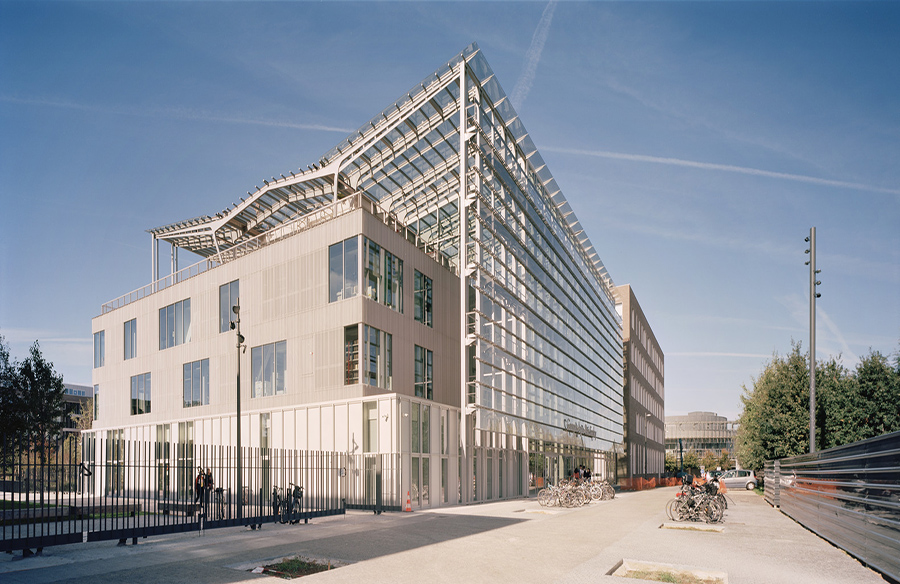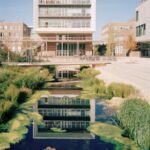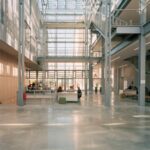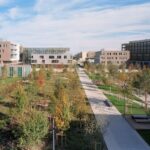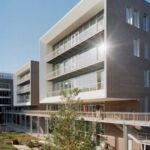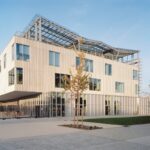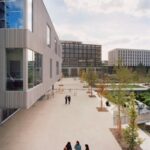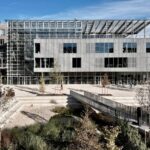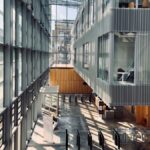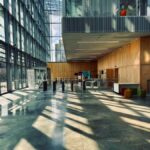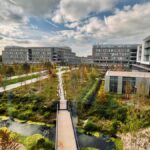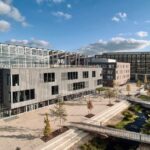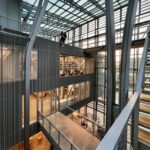The Agro Paris Tech campus, designed by Marc Mimram, embodies a remarkable coherence in its layout and design, seamlessly integrating into the Plateau de Saclay landscape while offering a unified and functional space for its users.
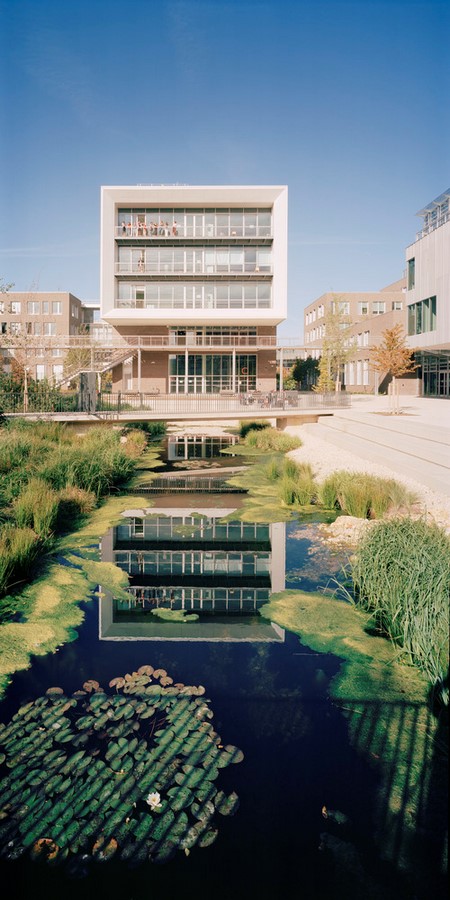
Architectural Features
The campus comprises eight buildings situated around a sprawling two-hectare garden, forming a central focal point for the entire complex. At the heart of this layout is the Forum, a striking glass structure serving multiple functions, including an orangery, learning center, and versatile event space. The Forum acts as a gateway to the campus, connecting the public realm with the tranquil garden and serving as the starting point for a covered arcade that links all buildings.
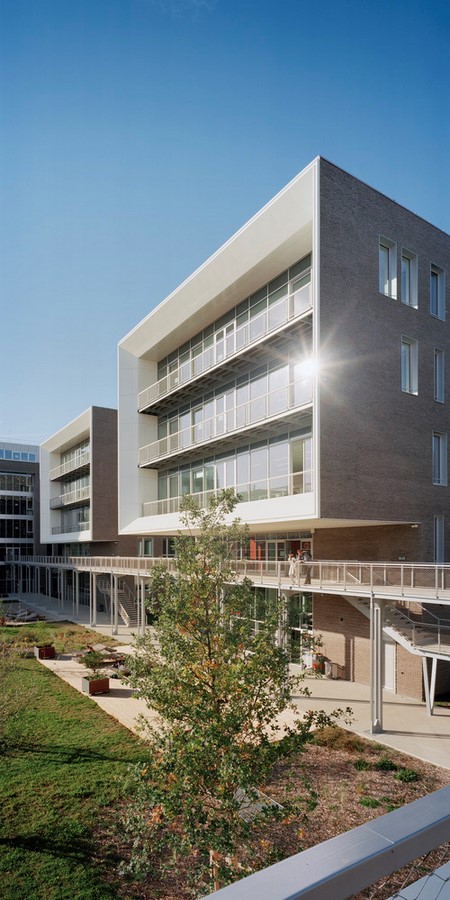
Collaborative Spaces
A key feature of the campus is the “Galerie des Savoirs,” a two-story gallery that fosters collaboration and interaction among lecturers, researchers, and students. This open space, flanked by various buildings, encourages serendipitous encounters and provides a conducive environment for learning and research.

Integration with Nature
The Forum building, characterized by its glass and steel construction, blurs the boundaries between indoor and outdoor spaces, offering panoramic views of the surrounding greenery. The garden, central to the project, serves as a series of interconnected courtyards, enhancing the coherence of the campus while providing tranquil outdoor spaces for relaxation and reflection.
Materiality and Sustainability
The architectural design emphasizes a harmonious blend of materials, with glass symbolizing transparency and connectivity in the Forum building, while earth-based concrete cladding lends a sense of solidity and permanence to the other structures. The use of sustainable materials and thoughtful design considerations ensure that the campus remains environmentally sensitive and responsive to its surroundings.
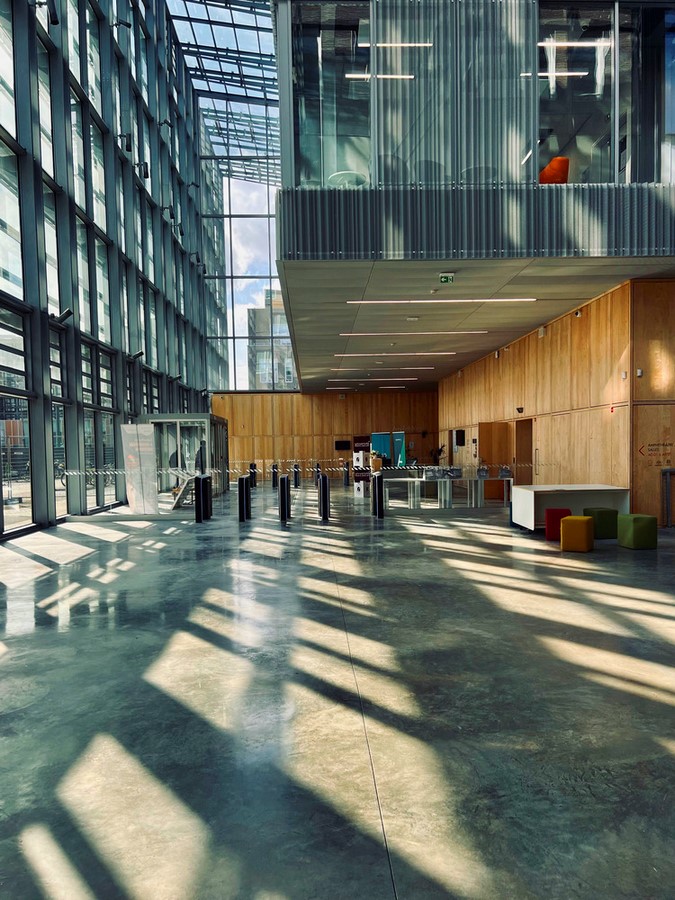
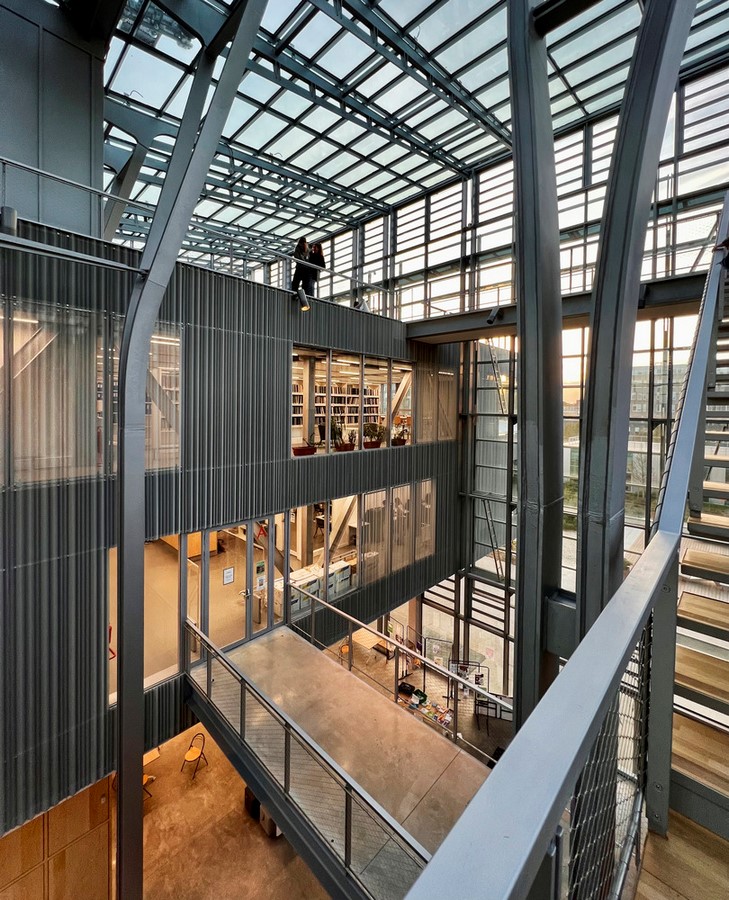
Conclusion
The Agro Paris Tech campus, envisioned by Marc Mimram, exemplifies a thoughtful approach to architectural design, integrating seamlessly into its natural and urban context while providing functional and inspiring spaces for learning, research, and collaboration. With its innovative design features and commitment to sustainability, the campus represents a model for future educational environments.


